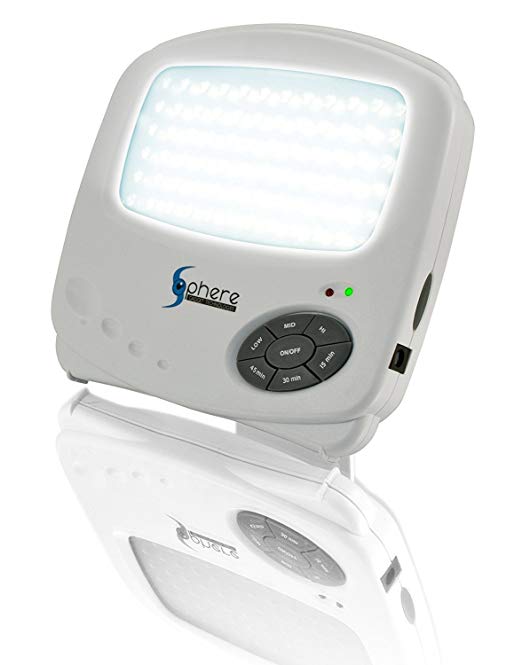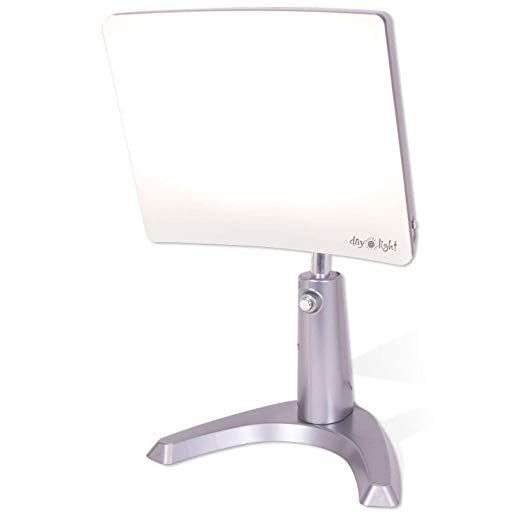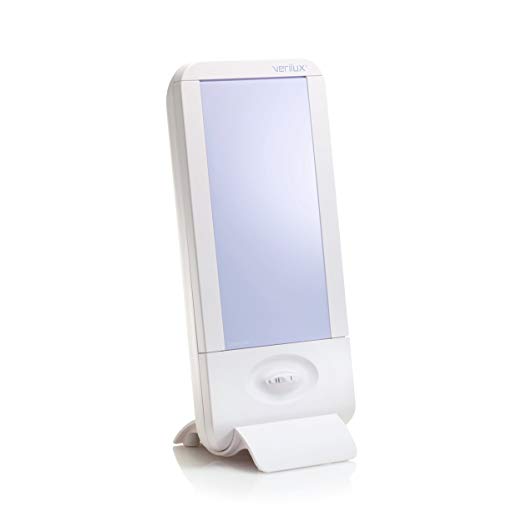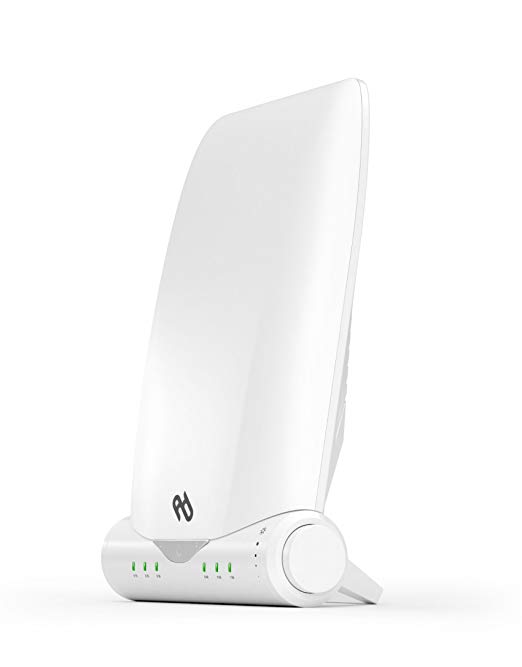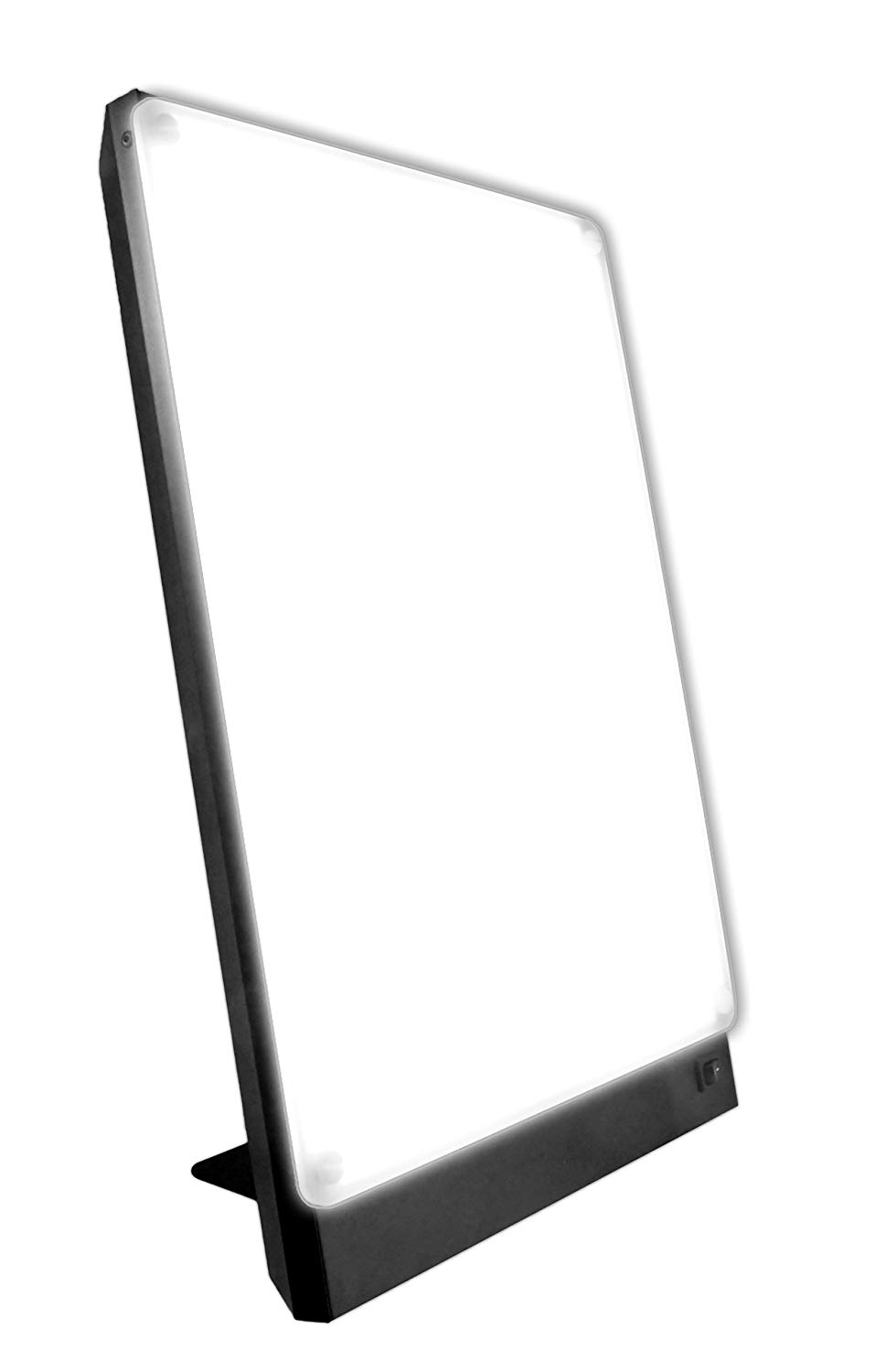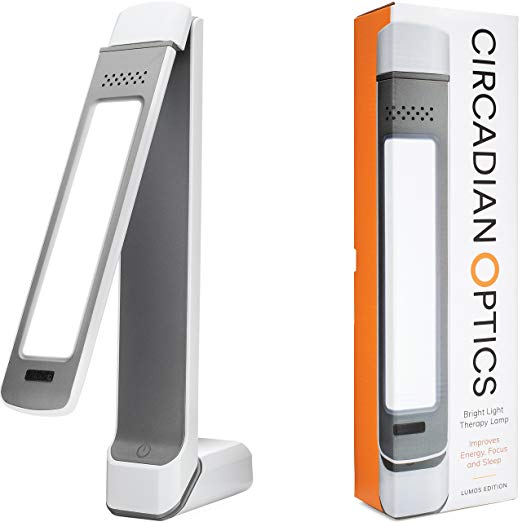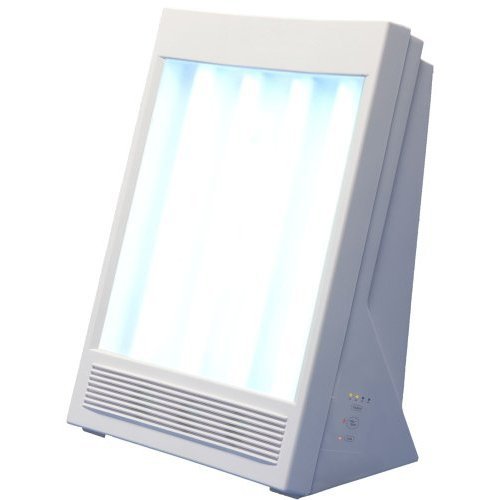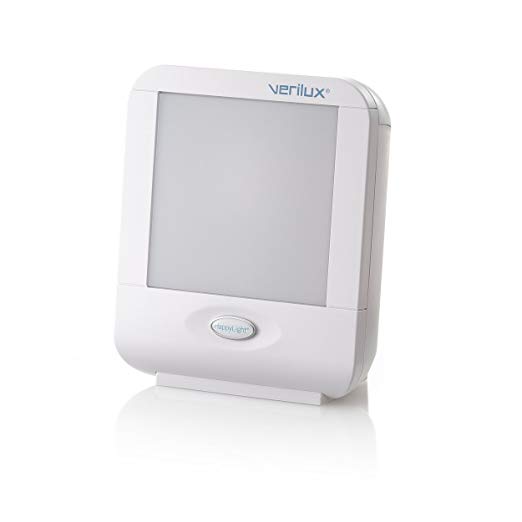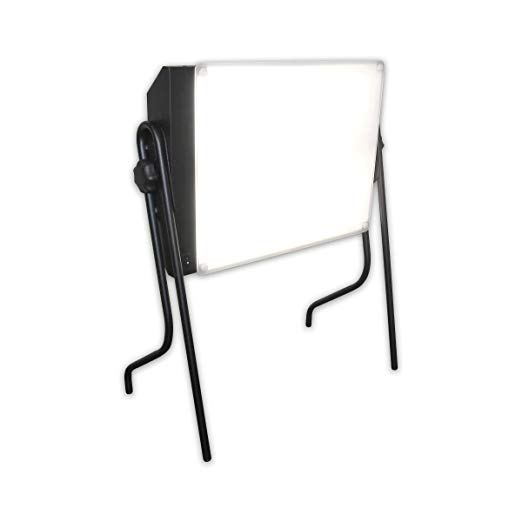Sphere Gadget Technologies Lightphoria Light Lamp
Last updated: June 18, 2019
We looked at the top Light Therapy Lamps and dug through the reviews from some of the most popular review sites. Through this analysis, we've determined the best Light Therapy Lamp you should buy.
Product Details
In our analysis of 99 expert reviews, the Sphere Gadget Technologies Lightphoria Light Lamp
placed 8th when we looked at the top 9 products in the category. For the full ranking,
see below.
From The Manufacturer
Lightphoria 10,000LUX Energy Light Lamp uses an array of 72 eye-optimized LED lights to deliver 10,000 lux of wide-spectrum white light; simulating natural sunlight whilst eliminating the dangerous UV rays. Place it 12-18 inches away from you while you read, eat breakfast, watch TV, or getting ready in the morning. 20-30 minutes each morning is all it takes to significantly improve energy levels and regulate sleep patterns. The compact design offers a tilt-back stand, programmable timer, and intensity level settings. Lightphoria is small and lightweight enough for you to bring conveniently on trips. Provides soothing glare free, flicker free light. LED bulbs do not emit heat to keep you and your family safe. Nylon travel pouch included. 100% satisfaction guaranteed. 1 year warranty provided by Sphere Gadget Technologies USA.
Expert Reviews
What reviewers liked
Extremely portable and energy effecient,often on sale so it typically cost just a bit more than inferior lights.
Using a light meter, I found that the lamp’s 10,000-lux reach on its brightest setting was 6.5 inches. This is particularly impressive compared to other lamps considering how small the Lightphoria is.
The light it produces is glare-free and flicker-free. It also comes with a timer that you can set to 15, 30 and 45 minutes.
For such a small light, it makes quite the impact. You can use the lamp 12-18 inches away from your face for seasonal affective disorders and receive a physical response in less than a week. Any further away than this reduces the effectiveness of this product.
The manual is a plain black and white affair but is easy to read and understand. It comes with a little drawstring bag so that you can cover it should you wish to either store it away or take it traveling with you.
It also has a built in timer so that you can set it for the duration you want. It will automatically shut off when the time is up.
This product does possess unique advantages which has been discussed along with the features especially the 20 year warranty. Not many products can boast of such a warranty.
One of the main plus points of this SAD light is its size. It measures around 6 x 6.5 inches and is about an inch wide. To put it into perspective it is roughly the size and thickness of a thin paperback book – so it is very compact.
Adapter is good to used for all countries.
Some of the plus sides of this SAD light is that it doesn’t emit any plastic like smells, which is characteristic of some of the bigger SAD lamps.
What reviewers didn't like
One year warranty but no return.
The lamp’s reach and coverage aren't ideal for daily sessions.
Because this lamp consists of 72 LEDs, you have 72 opportunities for something to fail and reduce the effectiveness of the therapy you receive. Although this circumstance is covered under warranty protections, it is still quite irritating to either send in the unit for a repair or try to replace the LED on your own if you don’t feel like waiting.
The unit will provide the recommended 10,000 Lux at a distance of between 12-18 inches from your body. Having it that close seemed uncomfortable to my eyes so I generally used it from a greater distance away although that means that you would need to spend longer using it than advertised to get the same effect.
One of the main things I didn’t like about it was the length of the cord and how lightweight it is.
The main drawback with this SAD light is the fact that it has no battery power – it has to be plugged in whilst you use it. So whilst it is portable you always need to be near a power source to use it. The fact the power cord is quite short doesn’t help either.
Designed to be placed just on regular desk level.
The only notable downside is that it doesn’t use any batteries, you have to plug it in using the A/C adapter
From our partners
